You’ve found our list of workplace wellness books.
Workplace wellness books are guides that help organizations create a healthy work environment. Examples of these books are Work Better Together by Jen Fisher and Ahn Phillips and Wellbeing at Work by Jim Clifton and Jim Harter. The purpose of workplace wellness books is to help employees enjoy a more enriching work experience.
You can combine workplace wellness books with employee wellness gifts and wellness programs to enhance employee well-being. These works are also helpful during Mental Health Awareness month.
This list includes:
- books about employee wellness
- books about employee health
- books on improving employee wellness
Here we go!
List of workplace wellness books
From expanding diversity to minimizing office stress, here are some ideas for workplace wellness books to guide you.
1. Wellbeing at Work by Jim Clifton and Jim Harter
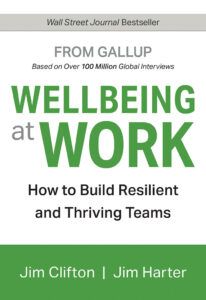
Anxiety and depression are growing among American workers. As a result, the need for workplace wellness is growing along with them. In Wellbeing at Work, authors and Gallup executives Jim Clifton and Jim Harter identify five key aspects of employee wellness. Their book explains how companies can improve these elements to enhance workplace well-being. This work includes action items and suggestions for helping employees. The authors also explore a new metric for measuring employee wellness called Gallup Net Thriving. Their findings point out the urgency of creating a more resilient workforce.
Notable quote: “Suffering and struggling employees have substantially higher disease burden due to diagnoses of depression and anxiety, among others. This translates into big differences in productivity.”
Learn more about Wellbeing at Work.
2. Workplace Wellness that Works: 10 Steps to Infuse Well-Being and Vitality into Any Organization by Laura Putnam
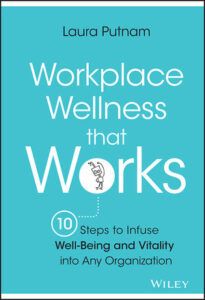
Well-being in the workplace can take many forms. In Workplace Wellness that Works, author Laura Putnam provides a step-by-step process for creating lasting, meaningful changes. According to the author, leaders should be agents of change. Her ten-step approach helps create a foundation by building on what already works. Identifying these aspects helps identify weak points that need change. With wellness as part of employee development, leaders can tailor their approach to fit the company and the workers.
Notable quote: “Just as schools are uniquely positioned to foster positive growth and change in young people, workplaces are uniquely positioned to do the same with adults, especially in the areas of health and well-being.”
Learn more about Workplace Wellness that Works.
3. Mental Health and Wellbeing in the Workplace: A Practical Guide for Employers and Employees by Gill Hasson and Donna Butler
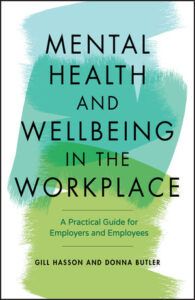
Because mental illness is an element of the work environment, it is important to workplace well-being. However, knowing how to address mental health issues can be challenging. With Mental Health and Wellbeing in the Workplace, authors Gill Hasson and Donna Butler help readers understand the role of mental health in workplace wellness. Their text gives guidance on difficult topics, such as dealing with anxiety and supporting workers with mental illness.
Notable quote: “In other words, wellbeing occurs when a person is able to enjoy life and has the resources to draw on to manage life’s ups and downs without feeling overly stressed.”
Learn more about Mental Health and Wellbeing in the Workplace.
4. Remote Not Distant: Design a Company Culture That Will Help You Thrive in a Hybrid Workplace by Gustavo Razzetti
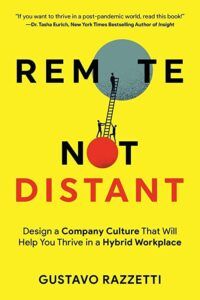
Wellness can be extra challenging in a virtual workplace. Workers may lack a sense of connection with their team and their leaders. In Remote Not Distant, Author Gustavo Razzetti discusses how culture drives workplace wellness within a hybrid company. Razzetti offers five steps for reimagining a remote work culture that helps hybrid workers feel connected. By letting employees help define the culture, companies can promote workplace wellness in new and innovative ways.
Notable quote: “Free yoga lessons and sushi are nice. However, culture is much more than that; it’s the environment that helps people do their best work.”
Learn more about Remote Not Distant and check out more remote work books.
5. The 4 Stages of Psychological Safety: Defining the Path to Inclusion and Innovation by Timothy R. Clark
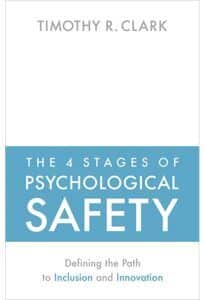
Employees’ sense of belonging is key to their well-being in the workplace. In The 4 Stages of Psychological Safety, author Timothy R. Clark explains how leaders can foster inclusion and belonging for the groups they lead. The text uses Clark’s own experiences, social sciences, and psychology to explain what makes employees feel safe. This information helps readers understand what it means to feel included and how leaders can help make it happen. For managers hoping to provide an enriching work environment, Clark’s explanations offer hope and guidance on a deeper level.
Notable quote: “Out of our flaws and insecurities, we model and reinforce exclusion to those around us. But it doesn’t have to be this way.”
Learn more about The 4 Stages of Psychological Safety.
6. Work Better Together: How to Cultivate Strong Relationships to Maximize Wellbeing and Boost Bottom Lines by Jen Fisher and Ahn Phillips
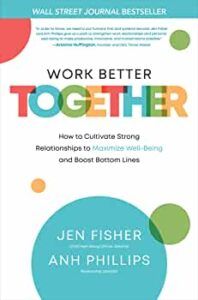
With the right connections, workers can find a strong sense of wellness in their workplace. Authors Jen Fisher and Ahn Phillips take a hopeful approach to connection in Work Better Together. Fisher and Phillips explore how strong relationships create a better work experience. Whether the workspace is real-world or virtual, relationships are vital to workplace well-being. The authors explain that an organization nurtures its workers by emphasizing self-care and interpersonal connection. As a result, a culture of positive relationships can benefit the company as much as its staff.
Notable quote: “If social psychologists invented a global experiment to determine human capacity for surviving paradox, they’d come up with something resembling the modern workplace.”
Learn more about Work Better Together.
7. The Art of Caring Leadership: How Leading with Heart Uplifts Teams and Organizations by Heather R. Younger
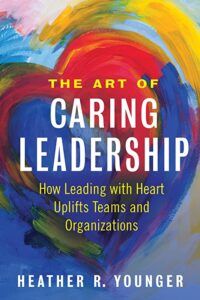
Caring leaders are an essential element of workplace well-being. Author Heather R. Younger based the text for The Art of Caring Leadership on podcast interviews conducted with various leaders. Her text provides nine ways for leaders to ensure their workers know how much they care. Aspects such as involving your workers and creating a listening culture might seem obvious. However, Younger clearly shows how failing to engage these aspects impacts a leader’s effectiveness. The author follows up with methods for improving these practices. The book also includes a self-assessment for leaders eager to learn how they measure up when it comes to caring.
Notable quote: “This book helps leaders bring to life that desire to care by providing a blueprint they can use to genuinely express that care in very definitive ways.”
Learn more about The Art of Caring Leadership.
8. The Employee Wellbeing Handbook: A Guide for Collaboration Across all Departments, Benefit Vendors, and Health Practitioners to Build a Culture of Wellness Within any Organization by Cassie Sobelton
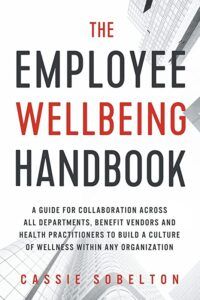
Tackling the task of well-being means coordinating many elements within the workplace. To help clarify the process, The Employee Wellbeing Handbook provides an overview of engaging wellness and well-being. Author Cassie Sobleton defines wellness as having a physical focus, while well-being takes a more holistic approach. Understanding each of these concepts helps leaders shape and improve company culture. By setting the tone for the business, an organization can also drive change across other channels. Sobleton explains that emphasizing well-being as a path to workplace wellness ensures a healthy and productive staff in every industry.
Notable quote: “Creating a culture of wellbeing within an organization does not have to be complex.”
Learn more about The Employee Wellbeing Handbook.
9. Mindful Leadership: The 9 Ways to Self-Awareness, Transforming Yourself, and Inspiring Others by Maria Gonzalez
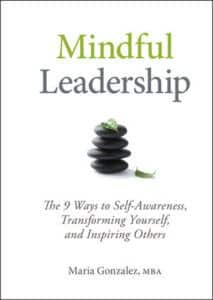
Modeling well-being for workers is one of the best ways for leaders to foster a better work culture. By becoming more mindful, managers become aware of their impact on their teams. In Mindful Leadership, Maria Gonzalez explains nine principles leaders can follow to improve their leadership skills. Rather than following trendy programs, leaders can improve their compassion, focus, and awareness. These abilities are key for building a workplace that promotes well-being for employees and employers. Exhibiting mindfulness helps managers model well-being, setting an example of wellness for their colleagues and workers.
Notable quote: “Mindfulness is a learnable skill that can be used by anyone who wishes to become a more effective leader.”
Learn more about Mindful Leadership.
10. The 5 Languages of Appreciation in the Workplace: Empowering Organizations by Encouraging People by Gary Chapman and Paul White
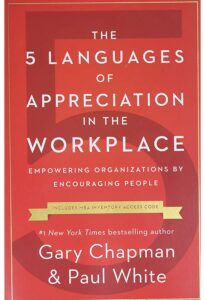
Appreciation is one of the most important elements of the workplace experience. Appreciation languages help leaders communicate caring and attentiveness to their workers. Understanding these languages improves communication and enhances the well-being of the whole team. Authors Gary Chapman and Paul White help readers identify these languages. Managers can learn how to show their appreciation in meaningful ways. This appreciation can lead to better interactions and improved workplace wellness. The process impacts all workers, from executives to entry-level workers.
Notable quote: “When leaders actively pursue teaching their team members how to communicate authentic appreciation in the ways desired by the recipients, the whole work culture improves.”
Learn more about The 5 Languages of Appreciation in the Workplace.
11. How to Thrive in the Virtual Workplace: Simple and Effective Tips for Successful, Productive, and Empowered Remote Work by Robert Glazer
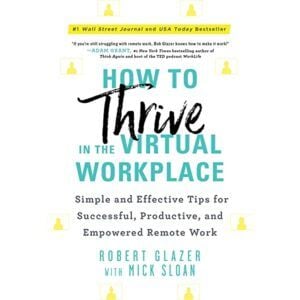
The remote work world creates unique challenges that can compromise workplace wellness. Author Robert Glazer is the founder of Acceleration Partners, a fully virtual workplace. Glazer understands the importance of well-being in a virtual environment. In How to Thrive in the Virtual Workplace, the author shares what he has learned about finding the right balance for remote workplace wellness. He identifies remote employees’ challenges and explains how to build an effective remote organization. Glazer also shares strategies for making a remote workplace as enriching as possible. The result is a guidebook for workplace wellness that helps remote workers thrive.
Notable quote: “I know from firsthand experience that remote work, when done effectively, drives greater happiness and engagement for employees and is a key competitive advantage.”
Learn more about How to Thrive in the Virtual Workplace.
12. The Culture Question: How to Create a Workplace Where People Like to Work by Randy Grieser, Eric Stutzman, Wendy Loewen, and Michael Labun
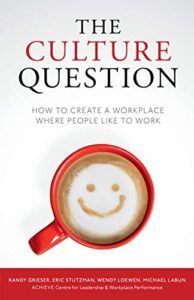
Liking where you work is not always easy, but it does help you feel happier and more productive. Creating a culture that supports wellness is essential to improving the workplace experience. The Culture Question provides insight into creating a more enriching workplace culture. The authors offer advice for leaders hoping to enhance their work culture. Their writings emphasize that sense of wellness benefits the whole organization. Topics covered include building meaningful workplace relationships and defining essential workplace values.
Notable quote: “Culture must be your highest priority if you want to make your organization a great place to work.”
Learn more about The Culture Question and check out more books on company culture.
13. Good Guys: How Men Can Be Better Allies for Women in the Workplace by David G. Smith and W. Brad Johnson

Gender inequity is an ongoing issue in the workplace. With guidance, men can become allies who champion a more balanced environment. In Good Guys, authors David G. Smith and W. Brad Johnson give guidelines to help men understand their role in the workplace. Familiar topics such as sexual harassment and pay disparities start the conversation. The authors also discuss biases that men may unknowingly participate in. The book uses research-based findings to explain how men can support their colleagues in meaningful ways.
Notable quote: “Gender inequities are not a women’s issue—they are a leadership issue.”
Learn more about Good Guys.
14. Reimagining Workplace Well-Being: Fostering a Culture of Purpose, Connection, and Transcendence by Jessica Grossmeier
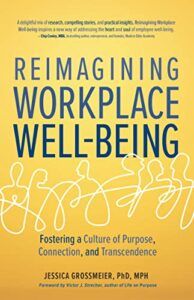
Feeling that your work matters is an important component of workplace wellness. With Reimagining Workplace Well-Being, author Jessica Grossmeier explains how to identify a workplace where workers can thrive. The author’s experience with burnout made her rethink what it means to feel connected to your work. Her approach is a blend of workplace spirituality with real-world applications. Grossmeier also shares how helping employees maintain wellness can benefit the company.
Notable quote: “The workplace can be a channel for engagement and support of behaviors considered mutually beneficial to the employee and the employer.”
Learn more about Reimagining Workplace Well-Being.
15. The Whole-Person Workplace: Building Better Workplaces through Work-Life, Wellness, and Employee Support by Scott Behson
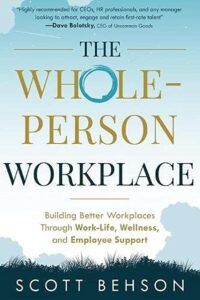
In an increasingly virtual work world, supporting workers’ mental and physical well-being is a necessity. Workplace expert Scott Behson shares his philosophy of workplace wellness in The Whole-Person Workplace. Productivity is no longer a basic metric for how well a company runs. When a company addresses its workers as whole individuals with complex lives, the workforce becomes stronger. Behson provides real-world examples of how organizations can contribute to employee wellness. Topics such as schedule flexibility, parental leave, and childcare become key components for leaders hoping to enhance workplace wellness.
Notable quote: “Now more than ever, the surest route to success for the widest array of businesses is to change the way we value employees.”
Learn more about The Whole-Person Workplace.
Conclusion
Workplace wellness books are valuable tools for creating a wellness program, which can be overwhelming. Books about workplace well-being can help leaders create a better culture. A few meaningful changes can improve workers’ mental and physical health. These improvements will benefit the company as much as the employees.
Next up, learn how virtual wellness activities and creating well-being surveys can help promote workplace wellness.
